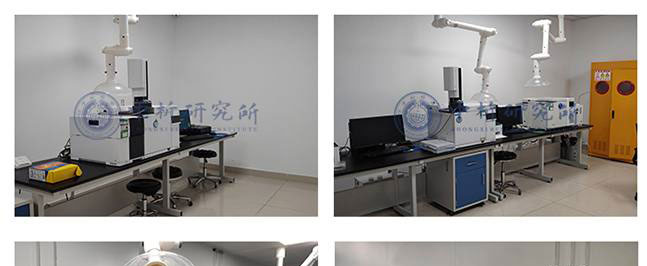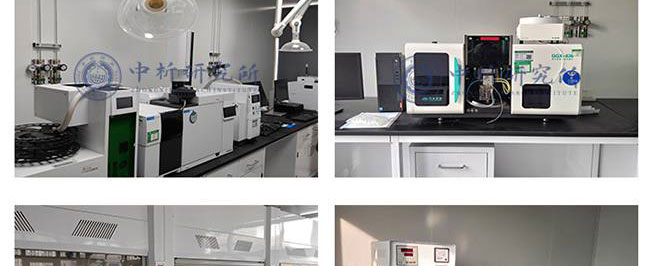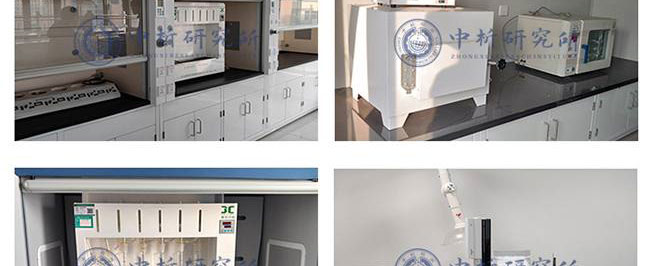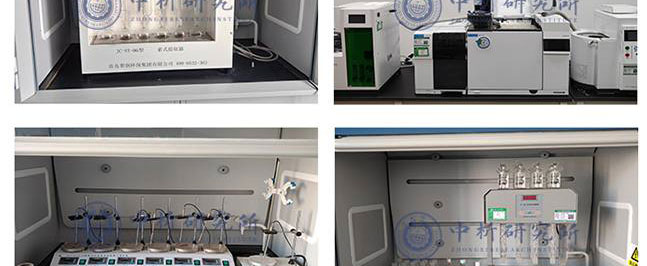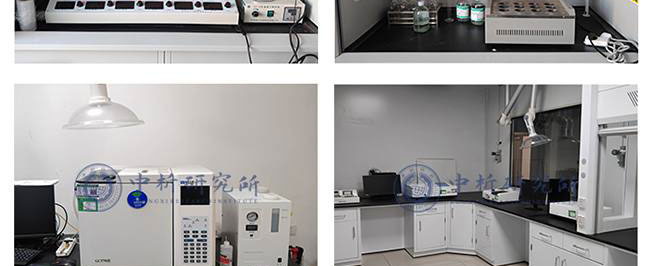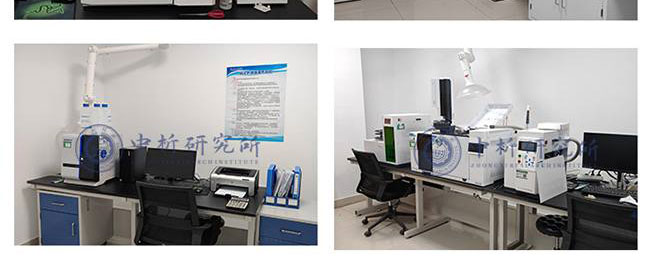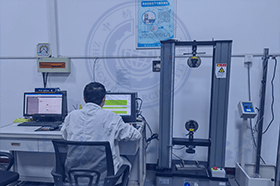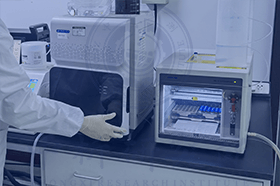国家标准 GB/T 14093.5-2009 机械产品环境技术要求 干热环境
【适用范围】本部分规定了干热环境用机械产品的防护类型、环境条件、技术要求、试验方法、验收规则以及标志、包装、运输和贮存等要求。rn本部分适用于按GB/T 4797.1-2005规定的干热气候区使用的一般用途的机械产品。产品的大类包括农机具、内燃机、工程机械、起重运输机械、重型机械、石化通用机械、电工产品、仪器仪表、机床工具和通用零部件等。
【中国标准分类】 A21 基础标准
【国际标准分类】 19.020-试验条件和规程综合
国家标准 GB/T 14093.5-1997 热环境 根据WBGT指数(湿球黑球温度)对作业人员热负荷的评价
【适用范围】 本标准规定了热作业环境和热作业人员热负荷的评价方法。 本标准适用于评价8h工作日的平均热负荷,不适用于评价小于1h工作的热负荷。
【中国标准分类】 A25 基础标准
【国际标准分类】 13.180-人类工效学
国家标准 GB/T 18048-2008 热环境人类工效学 代谢率的测定
【适用范围】本标准规定了在工作气候环境下的各种代谢率测定方法。rn本标准适用于工作行为检测,特定工作、体育运动的体能消耗估算,以及特定活动的总能耗估算等。rn注:本标准使用的估算、表格及其他资料均建立在以下标准人的基础上:n—男性:30岁,体重70kg,身高1.75m(体表面积为1.8m2);n—女性:30岁,体重60kg,身高1.70m(体表面积为1.6m2)。rn如果用户所面对的是特殊人群,比如包括儿童、老年人或残疾人等群体,应做出适当的修正。
【中国标准分类】 A25 基础标准
【国际标准分类】 13.180-人类工效学
国家标准 GB/T 18049-2017 热环境的人类工效学 通过计算PMV和PPD指数与局部热舒适准则对热舒适进行分析测定与解释
【适用范围】本标准给出了中等热环境中的人的整体热感觉和不舒适程度(热不满意度)的预测方法。标准给出认为可接受的整体热舒适和局部不舒适的环境条件,通过计算PMV和PPD指数,以及局部热舒适准则对热舒适性进行分析测定和解释。
本标准适用于处在理想热舒适的室内环境中的健康男性和女性,但在设计新环境和评价已有环境时,热舒适稍微有些偏差。本标准虽然是针对室内工作环境制定的,但也同样适用于其他环境。当考虑有身体残障等有特殊要求的人群时,可配ISO/TS14415:2005的4.2使用本标准。当考虑非空调环境时,还需要考虑民族、地区和地理差异。
【中国标准分类】 A25 基础标准
【国际标准分类】 13.180-人类工效学
国家标准 GB/T 18049-2000 中等热环境 PMV和PPD指数的测定及热舒适条件的规定
【适用范围】 本标准规定了预测处于中等热环境中的人对热的感觉和不舒适程度的方法,并规定了可接受的热舒适条件。 n 本标准适用于健康男性和女性。rn 本标准适用于室内工作环境的设计或对现有室内工作环境进行评价。
【中国标准分类】 A25 基础标准
【国际标准分类】 13.180-人类工效学
国家标准 GB/T 18977-2003 热环境人类工效学 使用主观判定量表评价热环境的影响
【适用范围】本标准适用于判定量表(热感觉量表、热舒适量表、热偏好量表、可接受性陈述表以及耐受量表)的编制和使用,这些判定量表可以提供可靠的和可比较的有关主观热舒适或热应激方面的数据。
【中国标准分类】 A25 基础标准
【国际标准分类】 13.180-人类工效学
国家标准 GB/T 32221-2015 真空技术 航天器用真空热环境模拟试验设备 通用技术条件
【适用范围】本标准规定了航天器用真空热环境模拟试验设备技术要求、检验规则、标识、贮存、包装和运输。rn本标准适用于工作压力1x10^(-2)Pa~1x10^(-4)Pa真空热环境模拟试验设备(以下简称设备)。
【中国标准分类】 J78 通用机械与设备
【国际标准分类】 23.160-真空技术
国家标准 GB/T 40233-2021 热环境的人类工效学 物理量测量仪器
【适用范围】本标准规定了热环境物理量测量仪器的荃本特征及测量方法。
本标准是为了标准化记录测试数据,从而定义了一些指标.这些定义不涉及舒适性或热应激的具体指标。
本标准适用于:
a)环境物理最测最仪器制造及设备使用规范;
b)双方就测员这些物理员拟定相关合同。
本标准适用于炎热、温和、舒适或寒冷环境对人体的影响。
【中国标准分类】 A25 基础标准
【国际标准分类】 13.180-人类工效学
国家标准 GB/T 40261.2-2021 热环境的人类工效学 交通工具内热环境检测 第2部分:用受试者评价热舒适性
【适用范围】GB/T 40261的本部分给出了用受试者评价交通工具内热舒适性的指导准则,并规定了一种标准实验方法。本部分确立了热环境检测和评价的一般原则,不局限于任何特定的交通工具。本部分规定的方法根据能否为人们提供热舒适性,确定交通工具在关注条件下的性能,用于交通工具的开发和评价。
本部分适用于各种类型的交通工具,包括轿车、公共汽车、卡车、越野车、火车、飞机、轮船、潜艇、吊车的驾驶舱以及类似空间。适用于人们被封闭于交通工具内以及暴露在外部环境时的情况。对于暴露在外界条件下的人,例如自行车和摩托车骑手、敞篷车驾驶员以及无驾驶舱的叉车操作人员等,车辆速度和天气会主导人休的反应。本部分的检测原则也适用。
本部分适用于其应用不影响车辆的安全运行条件下的交通工具乘客和操作人员。
本部分确立了热舒适性检测和评价的原则,包括测试方法和受试者实验的使用。同时,本部分还提供了检测热环境舒适性的主观方法。
本部分属于基本工效学标准,有助于特定交通T具和产品相关标准的开发。
【中国标准分类】 A25 基础标准
【国际标准分类】 13.180-人类工效学
国家标准 GB/T 40288-2021 热环境的人类工效学 术语和符号
【适用范围】本标准对热环境的人类工效学领域的相关物理量给出了定义,并列出相应的符号和单位。
本标准的主要目的是:
——给出热环境人类工效学中物理量定义和符号;
——为编写标准或其他有关热环境人类工效学的出版物提供术语和符号参考。
注:本标准允许在新的标准或现行标准的修订过程中正确地加入术语和符号。
【中国标准分类】 A25 基础标准
【国际标准分类】 13.180-人类工效学
行业标准 JGJ 286-2013 城市居住区热环境设计标准
【适用范围】本标准适用于城市居住区详细规划阶段的热环境设计。 根据原建设部《关于印发<2007年工程建设标准规范制订、修订计划>的通知》(建标[2007]125号)的要求,标准编制组经广泛调查研究,认真总结实践经验,参考有关国际标准和国外先进标准,并在广泛征求意见的基础上,编制本标准。rn本标准的主要技术内容是:1.总则;2.术语和符号;3.基本规定;4.规定性设计;5.评价性设计。rn本标准中以黑体字标志的条文为强制性条文,必须严格执行。
【中国标准分类】 P33 工业与民用建筑工程
【国际标准分类】 91.040.30-住宅建筑物
行业标准 JGJ/T 347-2014 建筑热环境测试方法标准
【适用范围】本标准适用于民用建筑与工业辅助性建筑的室内热环境测试。
【中国标准分类】 P31 工业与民用建筑工程
【国际标准分类】 91.040.01-建筑物综合
行业标准 NB/T 51008-2012 矿井热环境测定与评价方法
【适用范围】本标准规定了矿井热环境测定与评价的术语定义、测定内容、范围、精度及评价指标、热害等级。 本标准适用于高温矿井的热环境测定与评价。
【中国标准分类】 D09 矿业综合
【国际标准分类】 13.100-职业安全、工业卫生
地方标准 DB32/ 478-2001 江苏省民用建筑热环境与节能设计标准
【适用范围】本标准规定了我省范围内居住建筑室内热环境标准、能耗标准及节能设计原则和要求。 本标准适用于我省新建、扩建和改建的居住建筑的节能设计、其他民用建筑和公共建筑的节能设计亦可参照执行。
【中国标准分类】 P45 工业与民用建筑工程
【国际标准分类】 91.140.10-中央供热系统
地方标准 CNS 15875-3-2016 热环境之人因工程-人体接触表面之反应评鉴方法-第3部:冷表面
【适用范围】本标准说明冷伤害风险评鉴之方法及徒手/裸露手指碰触冷表面时之其他不利效应。本标准提供人体工学数据以建立冷固体表面之温度限值。所建立之数值可用于发展需要表面温度限值之特殊标准。本标准之数据适用于所有冷表面导致急性效应(例:疼痛、麻痹及冻疮)风险之领域。本数据并不限于手,亦适用于一般人体皮肤。本标准适用于成人(女性及男性)之健康皮肤。应用延伸之考虑参照附录B。本标准说明冷伤害风险评鉴之方法及徒手/裸露手指碰触冷表面时之其他不利效应。本标准提供人体工学数据以建立冷固体表面之温度限值。所建立之数值可用于发展需要表面温度限值之特殊标准。本标准之数据适用于所有冷表面导致急性效应(例:疼痛、麻痹及冻疮)风险之领域。本数据并不限于手,亦适用于一般人体皮肤。本标准适用于成人(女性及男性)之健康皮肤。应用延伸之考虑参照附录B。
【中国标准分类】 A25 基础标准
【国际标准分类】 13.180-人类工效学
地方标准 CNS 15875-1-2016 热环境之人因工程-人体接触表面之反应评鉴方法-第1部:热表面
【适用范围】本标准提供当人体皮肤接触热固体表面时发生烫伤之温度阈值。本标准亦说明当人体未受保护之皮肤可能或会碰触热表面时,评鉴其烫伤风险之方法。本标准亦提供须指定热表面温度限值之指引,惟未订定表面温度限值。备考1. 此等温度限值可规定于特定产品标准中或法规中,以预防人体接触产品之热表面时遭受烫伤。本标准针对接触时间0.5 s以上者。本标准适用于接触期间其表面温度几乎维持不变(参照4.1)。本标准不适用与热表面接触之大面积皮肤(约全身皮肤之10 %以上)。亦不适用于接触头部皮肤超过10 %或接触会导致脸部重要部位烫伤。备考2. 在某些情况中,接触热表面之结果,对个人会较严重,例如下列情况。- 通风不良下产生之烫伤。- 大面积烫伤(大于全身皮肤之10 %)会因体液流失而损害循环。- 头或全身大面积受热,即使未烫伤,会导致难以承受之热应变(heat strain)。本标准适用于所有物体之热表面,例:设备、产品、建物及自然物等,以下简称产品。本标准适用于在任何环境(例:工作场合及家中)使用之产品。本标准适用于会被健康成人、儿童、年长者及身障者所碰触之产品热表面。本标准不提供不适或疼痛防护之数据。
【中国标准分类】 A25 基础标准
【国际标准分类】 13.180-人类工效学
地方标准 CNS 15875-2-2016 热环境之人因工程-人体接触表面之反应评鉴方法-第2部:适温表面
【适用范围】本标准提供人体部位接触适温(约10 ℃至40 ℃)固体表面之热感知及不适程度的预测原理及方法。包含手、足及坐在地板上之接触热感知。
【中国标准分类】 A25 基础标准
【国际标准分类】 13.180-人类工效学
地方标准 DB50/ 5009-1999 重庆市民用建筑热环境与节能设计标准(居住建筑部分)
【适用范围】重庆市地方标准;------重庆市新建住宅热环境质量指标,住宅采暖空调除湿能耗指标,达到建筑热环境质量指标和节能要求的主要技术参数、措施。
【中国标准分类】 A25;A21 工业与民用建筑工程
【国际标准分类】 13.180-人类工效学
国际标准 ISO 7243-1989 热环境根据湿球玻璃温度计指示数对操作人员热影响的估算
【适用范围】Gives a method
which can easily be used in an industrial environment for evaluating the stresses on a individual. It applies to the evaluation of the mean effect of heat on man during a period representative of his activity but it does not apply to very short periods
nor to zones of comfort.
【中国标准分类】 A25;A21 基础标准
【国际标准分类】 13.100-职业安全、工业卫生
国际标准 ISO 7726-1998 热环境的人机工程学.物理量的测量仪表
【适用范围】This International Standard specifies the minimum characteristics of instruments for measuring physical quantities characterizing an environment as well as the methods for measuring the physical quantities of this environment.nIt does not aim to define an overall index of comfort or thermal stress but simply to standardize the process of recording information leading to the determination of such indices. Other International Standards give details of the methods making use of the information obtained in accordance with this standard.nThis International Standard is used as a reference when establishingna) specifications for manufacturers and users of instruments for measuring the physical quantities of the environment;nb) a written contract between two parties for the measurement of these quantities.nIt applies to the influence of hot
moderate
comfortable or cold environments on people.
【中国标准分类】 N51;Z30 物质成分分析仪器与环境监测仪器
【国际标准分类】 13.180-人类工效学
国际标准 ISO 7730-2005 中等热环境--对热舒适度预测平均通过(PMV)和预测不满意百分率(PPD)的测定及条件规范
【适用范围】This International Standard presents methods for predicting the general thermal sensation and degree ofndiscomfort (thermal dissatisfaction) of people exposed to moderate thermal environments. It enables thenanalytical determination and interpretation of thermal comfort using calculation of PMV (predicted mean vote)nand PPD (predicted percentage of dissatisfied) and local thermal comfort criteria
giving the environmentalnconditions considered acceptable for general thermal comfort as well as those representing local discomfort. Itnis applicable to healthy men and women exposed to indoor environments where thermal comfort is desirable
nbut where moderate deviations from thermal comfort occur
in the design of new environments or thenassessment of existing ones. Although developed specifically for the work environment
it is applicable tonother kinds of environment as well. It is intended to be used with reference to ISO/TS 14415:2005
4.2
whennconsidering persons with special requirements
such as those with physical disabilities. Ethnic
national orngeographical differences need also to be taken into account when considering non-conditioned spaces.
【中国标准分类】 C52;Z30 卫生
【国际标准分类】 13.080-土质、土壤学
国际标准 ISO 7730-1994 热环境人类工效学--代谢热量的测定
【适用范围】The metabolic rate
as a conversion of chemical into mechanical and thermal energy
measures the energetic cost of muscular load and gives a numerical index of activity. Metabolic rate is an important determinant of the comfort or the strain resulting from exposure to a thermal environment. In particular
in hot climates
the high levels of metabolic heat production associated with muscular work aggravate heat stress
as large amounts of heat need to be dissipated
mostly by sweat evaporation.nThis International Standard specifies different methods for the determination of metabolic rate in the context of ergonomics of the climatic working environment. It can also be used for other applications — for example
the assessment of working practices
the energetic cost of specific jobs or sport activities
the total cost of an activity
etc.nThe estimations
tables and other data included in this International Standard concern an "average" individual:n— a man 30 years old weighing 70 kg and 1
75 m tall (body surface area 1
8 m);n— a woman 30 years old weighing 60 kg and 1
70 m tall (body surface area 1
6 m).nUsers should make appropriate corrections when they are dealing with special populations including children
aged persons
people with physical disabilities
etc.
【中国标准分类】 A25 基础标准
【国际标准分类】 13.180-人类工效学
国际标准 ISO 9920-2007 热环境的人类工效学--服装整体隔热和抗水蒸汽的评定
【适用范围】This International Standard specifies methods for estimating the thermal characteristics (resistance to dry heatnloss and evaporative heat loss) in steady-state conditions for a clothing ensemble based on values for knownngarments
ensembles and textiles. It examines the influence of body movement and air penetration on thenthermal insulation and water vapour resistance.nThis International Standard does notn- deal with other effects of clothing
such as adsorption of water
buffering or tactile comfort
n- take into account the influence of rain and snow on the thermal characteristics
n- consider special protective clothing (water-cooled suits
ventilated suits
heated clothing)
orn- deal with the separate insulation on different parts of the body and discomfort due to the asymmetry of anclothing ensemble.
【中国标准分类】 A25 基础标准
【国际标准分类】 13.180-人类工效学
国际标准 ISO 9920-1995 热环境的人机工程学--热环境效应的主观判断评价
【适用范围】This document presents principles and examples of practical application for the construction of appropriate subjective scales for use in the assessment and evaluation of the physical environment. It does not standardize particular scales.
It considers scales of perception
comfort
preference
acceptability
expression form and tolerance
and environmental components such as thermal
visual
air quality
acoustic and vibration.
It does not consider other scales such as:
— scales related to the effects of the environment on the ability to read displays or signs
on manual performance or on psychological conditions such as mood
etc.;
— scales related to pain or scales related to stimuli that can lead to injury.
This document does not present principles of surveys (see Note) or questionnaire design. However
the scales that are developed using this document can be incorporated into surveys or questionnaires.
NOTE Environmental surveys are described in ISO 28802. ISO 28802 includes scales that are complementary to
and based upon
the principles of scale construction that are described in this document.
【中国标准分类】 A25 基础标准
【国际标准分类】 13.180-人类工效学
国际标准 ISO 10551-1995 热环境的人机工程学--热环境效应的主观判断评价.
【适用范围】Covers the construction and use of judgement scales for use in providing reliable and comparative data on the subjective aspects of thermal comfort or thermal stress.
【中国标准分类】 A25 基础标准
【国际标准分类】 13.180-人类工效学
国际标准 ISO 11399-1995 热环境人类工效学 相关国际标准的原则与应用
【适用范围】Purpose is to specify information which will allow the correct
effective and practical use of International Standards concerned with the ergonomics of the thermal environment. Describes the underlying principles concerning the ergonomics of the thermal environment.
【中国标准分类】 A25 基础标准
【国际标准分类】 13.180-人类工效学
国际标准 ISO 14505-2-2006/COR.1-2007 热环境的人类工效学--车辆内热环境的检测--第2部分:等效温度的测定
【适用范围】This part of ISO 14505 provides guidelines for the assessment of the thermal conditions inside a vehiclencompartment. It can also be applied to other confined spaces with asymmetric climatic conditions. It isnprimarily intended for assessment of thermal conditions
when deviations from thermal neutrality are relativelynsmall. Appropriate methodology as given in this part of ISO 14505 can be chosen for inclusion in specificnperformance standards for testing of HVAC-systems for vehicles and similar confined spaces.
【中国标准分类】 A25 基础标准
【国际标准分类】 13.180-人类工效学
国际标准 ISO 15743-2008 热环境的人类工效学--寒冷工作场所--风险检测和管理
【适用范围】This International Standard presents a strategy and practical tools for assessing and managing cold risk in thenworkplace
and includesn-- models and methods for cold risk assessment and management
n-- a checklist for identifying cold-related problems at work
n a model
method and questionnaire intended for use by occupational health care professionals inn identifying those individuals with symptoms that increase their cold sensitivity and
with the aid of suchn identification
offering optimal guidance and instructions for individual cold protection
n-- guidelines on how to apply thermal standards and other validated scientific methods when assessingn cold-related risks
andn-- a practical example from cold work.nThis International Standard supports good occupational health and safety (OHS). It is applicable to bothnindoor and outdoor work situations -- indoor work includes work done inside vehicles
outdoor work bothninland and offshore work -- but is not applicable to diving situations or other types of work performednunderwater.
【中国标准分类】 A25 基础标准
【国际标准分类】 13.180-人类工效学
国际标准 ISO/TS 13732-2-2001 热环境工效学-人类接触表面反应的检测方法-第二部分:适度温度下人类接触表面
【适用范围】This part of ISO/TS 13732 presents principles and methods for predicting the thermal sensation and degree of discomfort for people where parts of the body are in contact with solid surfaces at moderate surface temperatures (approximately 10 ℃ to 40 ℃).nIt deals with the thermal sensation for contacts of the hand
foot and for the sitting position on the ftoor.
【中国标准分类】 A25 基础标准
【国际标准分类】 13.180-人类工效学
国际标准 ISO/TS 14415-2005 热环境人类工程学-国际标准对带特别要求人员的应用
【适用范围】This Technical Specification provides background information on the thermal responses and needs of groups of persons with special requirements so that International Standards concerned with the assessment of the thermal environment can be appropriately applied for their benefit. It is applicable to the use of the International Standards listed in Clause 2 and includesn— a description of the range and variety of responses and adaptations to thermal environments of people with special requirements
and the consequences for measuring and evaluating those environments
n— the application of the PMV/PPD index when considering persons with special requirements and thermal comfort in moderate environments
n— the application of International Standards for the assessment of hot and cold thermal environments when such environments are occupied by people with special requirements
andn— brief descriptions of thermal disabilities and their relevant thermal response characteristics with detailed information from available knowledge on several of the most important of these (see Annex A).
【中国标准分类】 A25 基础标准
【国际标准分类】 13.180-人类工效学
国际标准 ISO/TS 14505-1-2007 热环境的人类工效学--车辆中的热环境检测--第1部分:热应力检测的原则和方法
【适用范围】This part of ISO 14505 gives guidelines for the assessment of thermal stress inside vehicles used for land
nsea and air operation. It offers information about the assessment of hot
cold as well as moderate thermalnenvironments by referring to different methods
as specified in International Standards
and specifying thenconstraints and necessary adjustments needed for the special case of vehicle climate assessment.
【中国标准分类】 Y54 基础标准
【国际标准分类】 91.140.30-通风和空调系统
国外标准 ASTM E2320-2004 热环境和室内空气条件用办公设备适用性分类
【适用范围】
Each Occupant Requirement Scale (see Figs. 1-5) in this classification provides a means to set the required level of serviceability of a building or facility for one topic of serviceability and to compare that level against any level of any other occupant
or of any building or facility.
Each Facility Rating Scale (see Figs. 1-5) in this classification provides a means to estimate the level of serviceability of a building or facility for one topic of serviceability and to compare that level against any level of requirement of any occupant
or of any other building or facility.
This classification can be used for comparing how well different buildings or facilities meet a particular requirement for serviceability. It is applicable despite differences such as location
structure
mechanical systems
age
and building shape.
This classification can be used to estimate the amount of variance of serviceability from target or from requirement
for a single office facility
or within a group of office facilities.
This classification can be used to estimate the following:
4.5.1 Serviceability of an existing facility for uses other than its present use.
4.5.2 Serviceability (potential) of a facility that has been planned but not yet built.
4.5.3 Serviceability (potential) of a facility for which remodeling has been planned.
Use of this classification does not result in building evaluation or diagnosis. Building evaluation or diagnosis generally requires a special expertise in building engineering or technology
and the use of instruments
tools
or measurements.
This classification applies only to facilities that are building constructions
or part thereof. (While classification may be useful in rating the serviceability of facilities that are not building constructions
such facilities are outside the scope of this classification. See discussion under definition 3.1.1.)
This classification is not intended for
and is not suitable for
use for regulatory purposes nor for fire hazard assessment nor for fire risk assessment.
1.1 This classification contains pairs of scales for classifying an aspect of the serviceability of an office facility
that is
the capability of an office facility to meet certain possible requirements for suitable thermal environment and indoor air conditions.
1.2 Within this aspect of serviceability
each pair of scales
shown in 5
is for classifying one topic of serviceability. Each paragraph in an Occupant Requirement Scale (see ) summarizes one level of requirement for serviceability on that topic
which occupants might require. The matching paragraph in the Facility Rating Scale (see ) is a translation of the requirement into a description of certain features of a facility which
taken in combination
indicate that the facility is likely to meet that level of required serviceability.
1.3 The paragraphs in the Facility Rating Scale (see ) are indicative and not comprehensive. They are for quick scanning to estimate approximately
quickly
and economically how well a facility is likely to meet the needs of one or another type of occupant group over time. The paragraphs are not for measuring
knowing
or evaluating how an office facility is performing.
1.4 This classification can be used to estimate the level of serviceability of an existing facility. It can also be used to estimate the serviceability of a facility that has been planned but not yet built
such as one for which schematic or preliminary drawings and outline specifications have been prepared.
1.5 This standard indicates what would cause a facility to be rated (classified) at a certain level of serviceabi......
【中国标准分类】 Y54 文教、体育、娱乐用品
【国际标准分类】 91.140.30-通风和空调系统
国外标准 ASTM E2320-2004(2012) 热环境和室内空气条件用办公设备适用性分类
【适用范围】1.1 This classification contains pairs of scales for classifying an aspect of the serviceability of an office facility
that is
the capability of an office facility to meet certain possible requirements for suitable thermal environment and indoor air conditions. 1.2 Within this aspect of serviceability
each pair of scales
shown in Figs. 1-5
is for classifying one topic of serviceability. Each paragraph in an Occupant Requirement Scale (see Figs. 1-5) summarizes one level of requirement for serviceability on that topic
which occupants might require. The matching paragraph in the Facility Rating Scale (see Figs. 1-5) is a translation of the requirement into a description of certain features of a facility which
taken in combination
indicate that the facility is likely to meet that level of required serviceability. 1.3 The paragraphs in the Facility Rating Scale (see Figs. 1-5) are indicative and not comprehensive. They are for quick scanning to estimate approximately
quickly
and economically how well a facility is likely to meet the needs of one or another type of occupant group over time. The paragraphs are not for measuring
knowing
or evaluating how an office facility is performing. 1.4 This classification can be used to estimate the level of serviceability of an existing facility. It can also be used to estimate the serviceability of a facility that has been planned but not yet built
such as one for which schematic or preliminary drawings and outline specifications have been prepared. 1.5 This standard indicates what would cause a facility to be rated (classified) at a certain level of serviceability but does not state how to conduct a serviceability rating or how to assign a serviceability score. That information is found in Practice E1334. The scales in this classification are complimentary to and compatible with Practice E1334. Each requires the other. 1.6 This standard indicates what would cause a requirement to be classified as being at a specific
【中国标准分类】 Y54 文教、体育、娱乐用品
【国际标准分类】 91.140.30-通风和空调系统
4、双方将就检测项目进行详细沟通,并签署保密协议,以保证客户信息的保密性。在此基础上,我们将进行测试试验.














